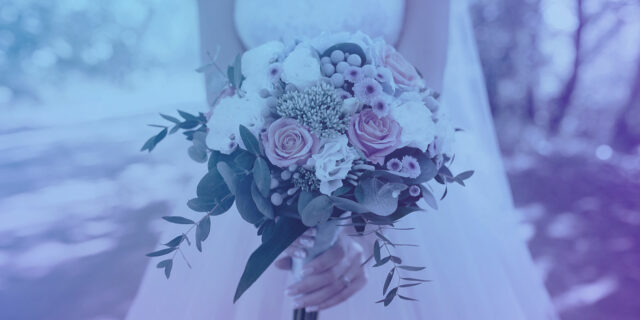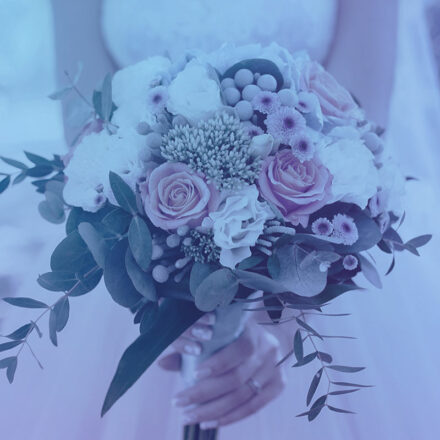Walter Isaacson:
It’s 1947 in the City of Brotherly Love and Francis Gerety, a 31-year-old copywriter at the Philadelphia ad agency NW Ayer is working late on an important assignment.
Walter Isaacson:
Gerety’s been hired to write ads for women’s products, which at the time is a rarity in the male-dominated advertising industry. On this particular evening, Gerety is desperately trying to wrap up an ad series she’s been working on for a big client, De Beers Diamonds. It’s a formidable challenge. Diamond sales plummeted during the Great Depression and never regained their footing, and because De Beers controls the world supply of rough diamonds, they’re banking on this new campaign to revitalize sales.
Walter Isaacson:
Gerety knows a lot is riding on this assignment and to make matters worse, she has to present her idea early the next morning. Gerety had just finished and was about to head to bed when she remembered that she forgot to write a signature tagline for her ads. Exhausted, she says, “God, please give me a line,” and quickly scribbles the first thing that comes to her mind on a sheet of paper before going to sleep.
Walter Isaacson:
The next morning, Gerety presents her idea to her team, then she hits them with a tagline, “A diamond is forever,” and with those four iconic words, she changed the wedding industry. The tagline went on to represent an ultimate promise. If you buy a diamond, your love will never end. Within four years, eight out of 10 American brides were wearing a diamond ring on their finger, and that number has stayed relatively consistent ever since. “A diamond is forever” went on to be named the best advertising slogan of the 20th century.
Walter Isaacson:
Today, weddings are a $300 billion a year industry, with someone saying, “I do,” every second. In fact, more than 90% of the world’s population will marry in their lifetime. Many of them twice. I’m Walter Isaacson, and you’re listening to Trailblazers, an original podcast from Dell Technologies.
Speaker 2:
Weddings have a tendency to increase in June and October.
Speaker 3:
But Mary, I wanted a church wedding, and all the parties and showers for me too!
Speaker 3:
That brings a symbol to Martha, a symbol for everything she hoped she’d find in marriage.
Speaker 3:
A beautiful creation that any bride would love to own.
Walter Isaacson:
The first recorded evidence of weddings comes from about 2350 BC. Back then, and for hundreds of years after, a couple’s wedding day had very little to do with love or religion. Marriage was strategic and political. It was an alliance. Hitching a young daughter to a man from a nearby tribe expanded the circle of people a family could trust in times of famine or war.
Walter Isaacson:
The sharing of resources increased prosperity for everyone. The ceremonies that accompanied these unions were largely informal, but there were a few elements from these early celebrations that foreshadowed the weddings of today.
Stephanie Coontz:
Eating and drinking seems to be a really important part of every wedding through the ages. In fact, there are many simple societies where if a man and a woman are seen eating together in the morning, it is assumed they are married.
Walter Isaacson:
This is Stephanie Coontz, author of Marriage, a History: How Love Conquered Marriage.
Stephanie Coontz:
The earliest food that we have records of celebrating weddings, their desserts were not a wedding cake, but a wedding pie from the 13th century. And the earliest recorded recipe for such a pie was oysters, lamb testicles, sweetbreads, butter, egg yolks, lemon, and fruit. You notice the sexual connotations of some of the food, but the combination must have been stunning.
Walter Isaacson:
Parents were probably hoping this combination of ingredients would create affection between the couple, many of whom met for the first time on their wedding day. This was important because any children conceived would create a connection between the camps, guaranteeing the continued cooperation.
Stephanie Coontz:
And only later as you developed state societies and classes where people began not to want to share resources, but only to marry into other rich people, or hopefully even to marry up, did marriage turn into a way of excluding other people from access and limiting your obligations. So it’s a very interesting change.
Walter Isaacson:
In fact, by the Middle Ages, a European wife’s dowry became the biggest infusion of cash or goods most men would ever acquire. And for most women, finding a husband was the most important investment they could make in their future. These unions became so important to the greater economy that families needed to make them public so they couldn’t be disputed, and one way to do that was to throw a big party.
Stephanie Coontz:
So I think weddings served both to celebrate, because weddings are fun and not all of these arranged marriages even, or convenience marriages were of people who didn’t like each other. So, that was a way of celebrating. It was also however a way of confirming and making sure that everybody knew that this was an official marriage, not something that had just been done on the sly and that it had to be taken very seriously.
Walter Isaacson:
Because such a large dowry would often change hands on the day, it made the soon-to-be married couple a target for robbers and ex-lovers. So in many cultures, the tradition of groomsmen began to provide the couple protection with the best man being the best fighter among them, and bridesmaids would dress like the bride to confuse potential thieves. With so much money trading hands, marriage and weddings eventually caught the attention of the Catholic Church.
Stephanie Coontz:
The Catholic Church originally was not particularly in favor of marriage and for the first six centuries of its existence, pretty much left it alone. But then the church and the state began to fight over who had control over what was a really important political and economic resource.
Walter Isaacson:
In the 13th century, the Catholic Church deem marriage an official sacrament. This was the beginning of what we recognize as modern day Christian marriage, and by extension, the traditional Christian church wedding, including the vows.
Stephanie Coontz:
The first part of those vows sound very good. “Do you promise to love and keep?” But when it goes to the woman, it says “obey,” which it does not say for the man. And the man says that, “He gives his love and with all his worldly goods, he endows her,” but this is an outright lie, because marriage in those days meant that the woman endowed the man with all her worldly goods. The minute a woman married, he owned everything that she inherited/earned, all of her personal jewels, everything. So a nice sentiment, but spoken by the wrong person.
Walter Isaacson:
Other than the necessary revolt against the word obey, the passage has remained pretty much intact, “To have and to hold from this day forward, for better or worse, for richer or poorer, in sickness and in health until death do us part.”
Walter Isaacson:
In fact, these vows are still used by most sects of Christianity, as well as non-denominational couples to this day. But vows weren’t enough to make a marriage official. For that, you needed a bedding ceremony. The bedding ceremony was tied to the idea that marriage’s main purpose was to produce legally recognized offspring. It usually began with a priest blessing the bed while selected wedding guests watched the act. Similar rituals existed across many cultures. In Europe and then North America, bedding ceremonies gradually transitioned to variations of the bride tossing a bouquet as a distraction while the newlyweds raced alone to their room.
Walter Isaacson:
Afterwards, the groom would toss the bride’s garter to announce having made things official, and symbolic nods to these acts still exist. So weddings now had vows and consummation, but they still lacked something we consider quite important today, love.
Stephanie Coontz:
Well, people have always wanted to marry for love, but it really only became practical as wage labor spread and young people could defy their parents and marry without waiting to inherit a farm or a dowry. Also the ideals of the Enlightenment and the American Revolution and the French Revolution were critical; the pursuit of happiness.
Walter Isaacson:
With a burgeoning middle class bringing more social mobility, there was a growing distaste for weddings designed solely to trade a daughter for the family’s gain. And when Queen Victoria married Prince Albert in 1840 and famously referred to her union as a “love match,” her subjects decided that they wanted a love match too.
Walter Isaacson:
But it’s what Queen Victoria wore on her wedding day that’s been remembered as her most famous contribution to weddings, a white dress.
Stephanie Coontz:
Now, until those days, most women used their best dress for a wedding. They didn’t buy a new dress. White was not a traditional color. Blue was the color for virginity, many women preferred black or brown because those could be used for funerals and didn’t show the dirt the way a white dress did.
Walter Isaacson:
Queen Victoria went against the grain. White represented her wealth rather than her purity, but the color caught on and many women still emulate her to this day. But this was just the start of the royal family’s influence on wedding trends in the West, which arguably reached its peak when Princess Diana married Prince Charles on July 29th, 1981.
Walter Isaacson:
With a $48 million price tag, their wedding was labeled The Wedding of the Century. 3,500 guests attended the ceremony inside St. Paul’s Cathedral. 600,000 more lined the streets of London to see the procession, and another 750 million watched on TV. Diana’s dress cost more than $30,000 and had a record-breaking 25-foot train. But her dress is probably best remembered for its sleeves, those large, frilly, puffy sleeves.
Chloe Schachter:
My grandmother talks about how when Princess Diana had her dress, before she wore those sleeves, you couldn’t sell a dress with sleeves like that for a dollar.
Walter Isaacson:
This is Chloe Schachter, granddaughter of Hedda Kleinfeld and Jack Schachter of the Kleinfeld bridal family.
Chloe Schachter:
The moment Princess Diana walked out with those sleeves, she couldn’t have enough inventory of that type of dress.
Walter Isaacson:
Princess Diana didn’t get her dress at Kleinfeld, but practically every American bride who wanted to look like her did. Today, Kleinfeld remains one of the most respected brands in bridal wear and has the largest selection of dresses in the US. But when they first opened their doors, there wasn’t a single wedding dress in their inventory.
Walter Isaacson:
Established in Brooklyn in 1941, Kleinfeld’s small three dressing room storefront originally specialized in furs and evening wear. By the 1960s, Kleinfeld had become so popular that they had to expand, so they bought up a bunch of lots on their block and hired a new store manager to help them build their rapidly growing business. And this new hire wanted to take Kleinfeld in a new direction.
Chloe Schachter:
She hounded my grandparents about starting a bridal business. And my grandmother was like, “No, that doesn’t make sense. We’re doing so well with the furs and the coats and the evening wear.” “Please just let me try. I will run the whole business.” And that was it. They brought in a couple dresses. They reserved one fitting room for bridal and the light switch went on. Everybody was so excited. Everyone was so anxious to get their hands on a real bridal experience. That didn’t really exist.
Walter Isaacson:
Kleinfeld went on to provide a new experience for women searching for wedding dresses, one that was very different from department stores. They provided a place where for a few hours, a bride to be was given personalized attention to help them find the perfect dress. At Kleinfeld, women were treated like royalty.
Chloe Schachter:
And then my grandmother likes to describe the experience as you put the dress on and you evolve into something else. She says it is the most amazing thing to watch somebody go from who they are when they walk in to who they are when they’re wearing the dress.
Walter Isaacson:
Kleinfeld changed the wedding industry. They gave women access to couture dresses and expert one-on-one bridal consultation. And by introducing designers to American women, Kleinfeld also had a hand in influencing how the dresses themselves were crafted.
Chloe Schachter:
My grandmother would invite designers into the store, [Sale 00:16:23], Priscilla, the big name designers of that time to observe, and they’d come in and they’d watch women try on dresses. They’d see what they were drawn to at that time, what interested them, what aspects of the dresses they liked and the designers would use that to inform next season’s dresses.
Chloe Schachter:
So when you think about the legacy of the store, the legacy of my grandmother, her fingerprints, and my grandfather’s too, their fingerprints are everywhere. They’re all over the wedding industry today.
Walter Isaacson:
In 1990, Hedda and Jack sold Kleinfeld. Its new owners relocated the business to Manhattan, where it now boasts 17 fitting rooms, 1,500 designer dresses, and a staff of 250 employees who annually service more than 17,000 brides. And Kleinfeld is now home to the popular wedding show, Say Yes to the Dress, which is currently in its 20th season. Say Yes to the Dress arrived during the first wave of the next great wedding industry disruptor, wedding-themed reality TV.
Walter Isaacson:
Weddings have moved from the domain of private occasions into the sphere of must-see entertainment. In fact, by 2011, 20% of all reality TV in North America were wedding programs.
David Tutera:
Television has incredibly changed the viewing of how we see or perceive weddings. I mean, I’m part of that equation and I’ve had a television show on for 17 consecutive years, and a majority of my shows were based on weddings.
Walter Isaacson:
This is David Tutera, celebrity wedding planner and host of My Fair Wedding.
David Tutera:
People loved to watch me bring joy to people getting married, walking down the aisle. However, they also, not shows that I’ve done, love seeing the drama of what goes on behind the scenes and sometimes the things that should have happened that didn’t happen.
Walter Isaacson:
But for more inspiration-seeking couples, the thing they love most is the grand wedding they see on TV.
David Tutera:
So yes, what’s happened is that people are trying to look for a bigger splash, a bigger moment, a bigger over the top thing that’s like, “Oh my gosh, why did they do that?”
Walter Isaacson:
In the roughly 20 years since reality TV first hit the airwaves, wedding budgets have continued to grow. Today, the average American reception has ballooned to more than $30,000, making weddings a billion dollar industry. But weddings haven’t just become more expensive. They’re also getting more elaborate.
David Tutera:
I do have clients that for example two years ago, wanted me to shut down, Wilshire Boulevard and Rodeo Drive so the elephant can come down while they were on the elephant arriving to the Beverly Region Hotel. Guess what? We did it. We worked with the City of Beverly Hills and made it happen. But if you have time and you’re smart enough and work with the right people, several odd requests can actually happen.
Walter Isaacson:
Weddings have become an opportunity for couples celebrating their union to push the limits of what a wedding can be.
David Tutera:
I think it’s maybe given the perspective that a wedding doesn’t have to be so traditional, the viewers that have watched me over the course of so many years have realized, “Wait a minute, we can have a lot more fun with this as opposed to just sitting down and doing what the predictable going back 100 years ago, right?
Walter Isaacson:
And if reality television began the trend of hyper-personalized, larger than life weddings, it was pushed even further by social media. Suddenly it wasn’t just royals, celebrities, or reality television stars who were creating wedding trends. It was everyone.
Hamish Shephard:
Technology’s been transforming the wedding industry really for the last decade enormously.
Walter Isaacson:
This is Hamish Shephard. He’s the founder of Bridebook, an online platform that helps couples in more than 180 countries plan their big day, but Shephard’s path to the top of the wedding planning industry ironically wasn’t something he planned.
Hamish Shephard:
So how I got into the wedding industry was a bit of a serendipitous path, to be honest. Once upon a time, my grandparents lived in an amazing old house in England that they left actually at the end of the Second World War. And then about 70 years later, the company that had taken it on went bankrupt and the property came back to us and my brothers and I decided to launch it as a corporate events venue, just outside London.
Hamish Shephard:
And then through strange circumstance, a few people started to ask us if we did weddings, and we are three clueless brothers who said we’d never do weddings. And then we hosted our first few and actually that taught us a lot about the industry, and that whole journey taught me a huge amount about watching the challenges of running a wedding business and seeing all the couples try and navigate this extremely complex one-off occasion in their life.
Walter Isaacson:
Especially when you consider that for the average wedding, couples are coordinating more than 100 guests. They’re also managing between 13 and 19 small businesses or wedding professionals. Budgeting alone can become a full-time job, and not everyone can afford a wedding planner. So more couples turned to social media for help and inspiration.
Hamish Shephard:
So previously weddings were hyper-localized and now, inspiration is incredibly globalized. And that’s really led by Pinterest and Instagram. I think as Pinterest has 19 billion wedding photos on it, whereas a generation before, you might look at a couple of wedding magazines and your parents’ wedding album, now you can look at photos of anything you could ever dream.
Walter Isaacson:
But having a million sources of inspiration doesn’t necessarily make it easier to plan a wedding. So Shephard set out to do just that.
Hamish Shephard:
And in the end, Bridebook comes in as really a matchmaking service in some respects, helping couples, guide them through the journey, arrange their guests, their budget, know what order to do, make sure they haven’t forgotten anything. Then most importantly, help them find the suppliers they’re looking for, which helps those businesses in turn.
Walter Isaacson:
To test the idea, Shephard and his team launched a basic site, hoping to get 100 couples to sign up in the first three months. 3,000 couples signed up in the first week, and when they officially launched in 2016, Bridebook exploded.
Hamish Shephard:
So, absolutely wild and a special moment for me as the founder that a weird idea I had a few years ago is spreading around the world and bringing as much fun as we possibly can toward these corners of the world. In our short journey so far, we’ve now planned a million weddings on the app. We’ve had over 100 million guests. We’ve got 100 million guests partying and dancing all over the world. And our goal is to get that to be a billion people as soon as possible. It has been a great adventure so far.
Walter Isaacson:
Bridebook is arguably the biggest wedding innovation since the white dress, and along with the expanding influence of social media, Bridebook has helped cement the idea that a wedding should be whatever a couple wants it to be. This trend in personalization driven by the masses on social media is now informing royal weddings instead of the other way around.
Hamish Shephard:
And if we just look at the last royal wedding of Harry and Meghan, she had a gospel choir, it was in front of the Queen. She walked down the aisle on her own. They left in an electric converted Jaguar, all these hyper-personal moments is brilliant. You shouldn’t have to copy anyone else. You do it your way, and today, there are many more ways to do whatever you want.
Walter Isaacson:
So what’s the future of weddings in a world where anything goes? Some innovators have decided to take something old and turn it in to something new.
David Bleyan:
The idea of Heartbeat Ring came to me while I was doing my doctorate degree, knowing well that one day, I might have to wear a wedding ring myself. It occurred to me that the rings can be much more than just a piece of material and can connect two hearts literally, and not just in legends.
Walter Isaacson:
This is David Bleyan:. He’s the founder and CEO of The Touch, a check company that makes the Heartbeat Ring. The Heartbeat, or HB Ring, is a smart wedding band that allows you to see and feel the realtime heartbeat of your loved one. Wedding bands are one of the oldest wedding traditions, arriving centuries before the De Beers Diamond Company. They can be traced back to the ancient Egyptians, who placed rings of hemp on the fourth finger of the left hand, believing it held a vein of love connected directly to your heart. Bleyan decided to build on that idea and take it one step further.
David Bleyan:
Basically, the story goes that also in my family, when I was born, my father was in army and my mom had no way of informing him about the birth of his son except sending him a telegram, which took about two months. Also, she had no way knowing if he’s fine without sending a telegram or a letter and waiting for an answer for a few months, so that was another motivation that brought me to the idea of HB Rings.
Walter Isaacson:
By double-tapping your ring, you can access the heartbeat of your beloved, even if separated by an ocean. And although some worry about the Black Mirror-like implications of having their heartbeat monitored, users have the choice between sending a real time or their last recorded heartbeat, eliminating the possibility of someone using the ring to monitor their partner, and this blend of cutting edge technology with a century’s old tradition has proved to be a hit.
David Bleyan:
Actually, HB Ring was a small project for our company and we presented it to the world with expectation that we would make a small batch just for people who are crazy enough to think that’s a cool idea. However, the feedback we received make us leave everything else and just focus our attention on the HB Rings only. Throughout last years, we received over 20,000 emails with many, many very personal stories, and some of them brought us to tears, some happy ones and some very sad ones. It’s sometimes very, very personal how much it can mean to feel the heartbeat of a loved one.
Walter Isaacson:
So while many weddings have become less traditional and are getting flashier and more expensive, it’s also true that some traditions have been notoriously hard to shake. And with COVID having turned the wedding industry on its ear, forcing ceremonies to be conducted over Zoom or in small outdoor venues, some are predicting this cost savings may encourage couples to host more intimate affairs. But whatever the couples of the future decide, one thing is certain. For better or worse, for richer or for poorer, options now exist for them to make their wedding day anything they decide best represents their union and their love. Hamish Shephard…
Hamish Shephard:
You can do whatever you want. Do not worry about anyone else’s opinions. You are having the party to celebrate finding your sidekick in life. The person who’s going to be with you for the rest of your life and there is no better reason for a great party on Earth.
Walter Isaacson:
I’m Walter Isaacson, and you’ve been listening to Trailblazers, an original podcast from Dell Technologies. If you’d like to learn more about any of the guests on today’s show, please visit DellTechnologies.com/Trailblazers. Thanks for listening.
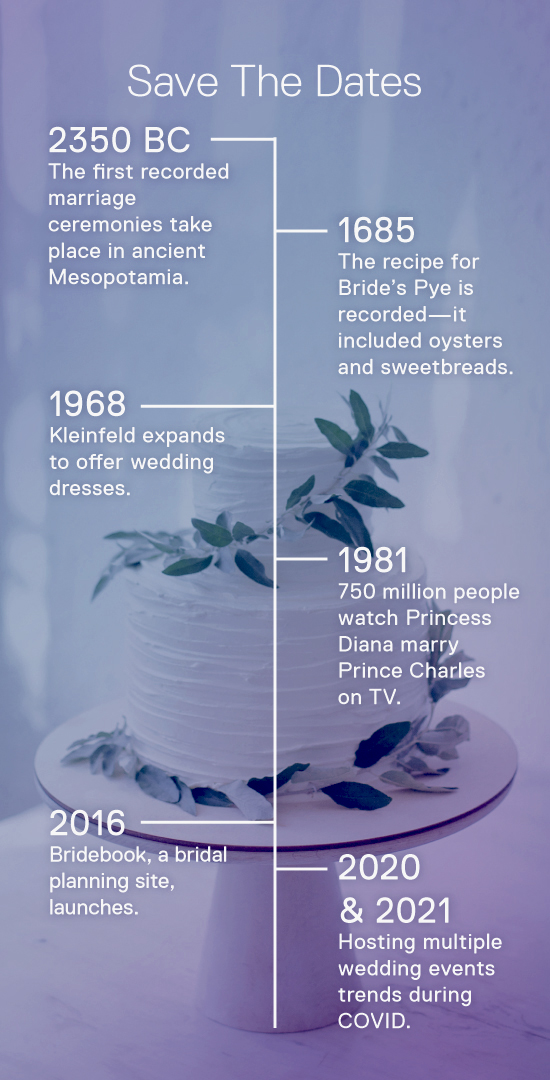
 Stephanie Coontz
is Director of Research at the Council on Contemporary Families and the author of 7 books on the history of marriage and family life. She is currently completing a collection of essays called "For Better AND Worse: The Problematic Past and Uncertain Future of Marriage," to be published by Viking Press.
Stephanie Coontz
is Director of Research at the Council on Contemporary Families and the author of 7 books on the history of marriage and family life. She is currently completing a collection of essays called "For Better AND Worse: The Problematic Past and Uncertain Future of Marriage," to be published by Viking Press.
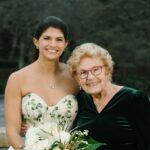 Chloe Schachter
is the granddaughter of Hedda Kleinfeld Schachter, the founder of Kleinfeld Bridal. Chloe grew up in New York City, often spending evenings and weekends with her grandparents, hearing stories of "the store" and going to seasonal bridal shows where she spent time with Mara Urshel, the current owner of Kleinfeld, and Amsale Aberra, famed wedding dress designer.
Chloe Schachter
is the granddaughter of Hedda Kleinfeld Schachter, the founder of Kleinfeld Bridal. Chloe grew up in New York City, often spending evenings and weekends with her grandparents, hearing stories of "the store" and going to seasonal bridal shows where she spent time with Mara Urshel, the current owner of Kleinfeld, and Amsale Aberra, famed wedding dress designer.
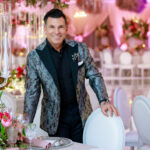 David Tutera
is recognized as one of the top planners in USA in numerous publications and Honored by Life & Style Magazine as “Best Celebrity Wedding Planner,” David has created amazing events for: Jewel, Shannen Doherty’s wedding, Star Jones’s wedding and events for Jennifer Lopez Matthew McConaughey Elton John, Barbara Walters, the Rolling Stones and many other celebrities.
David Tutera
is recognized as one of the top planners in USA in numerous publications and Honored by Life & Style Magazine as “Best Celebrity Wedding Planner,” David has created amazing events for: Jewel, Shannen Doherty’s wedding, Star Jones’s wedding and events for Jennifer Lopez Matthew McConaughey Elton John, Barbara Walters, the Rolling Stones and many other celebrities.
 Hamish Shephard
is the founder and CEO of Bridebook, the UK’s #1 wedding planning app. After co-founding meal-kit service HelloFresh, Hamish drew on his experience running Hedsor House, one of the UK’s leading wedding venues, to found Bridebook.
Hamish Shephard
is the founder and CEO of Bridebook, the UK’s #1 wedding planning app. After co-founding meal-kit service HelloFresh, Hamish drew on his experience running Hedsor House, one of the UK’s leading wedding venues, to found Bridebook.
 Davit Bleyan
is the CEO of TheTouch X. His company was first to digitalize wedding rings, connecting two people’s heartbeats in real-time through a smart ring. Now, besides helping people feel closer to their loved ones, his company is helping other jewelry brands transition to the digital era.
Davit Bleyan
is the CEO of TheTouch X. His company was first to digitalize wedding rings, connecting two people’s heartbeats in real-time through a smart ring. Now, besides helping people feel closer to their loved ones, his company is helping other jewelry brands transition to the digital era.
